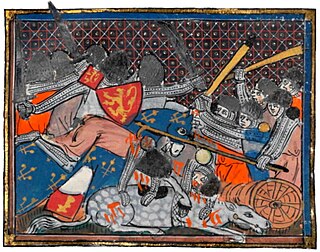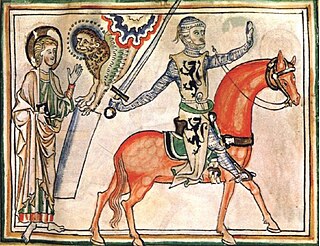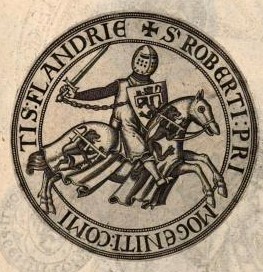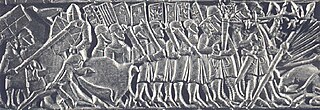Related Research Articles

West Flanders is the westernmost province of the Flemish Region, in Belgium. It is the only coastal Belgian province, facing the North Sea to the northwest. It has land borders with the Dutch province of Zeeland to the northeast, the Flemish province of East Flanders to the east, the Walloon province of Hainaut in the south and the French department of Nord to the west. Its capital is Bruges (Brugge). Other important cities are Kortrijk in the south and Ostend (Oostende) on the coast, Roeselare and Ypres (Ieper). The province has an area of 3,197 km2 (1,234 sq mi) which is divided into eight administrative districts (arrondissementen) containing 64 municipalities. As of January 2019, West Flanders has a population of 1,195,796.

Menen is a city and municipality located in the Belgian province of West Flanders. The municipality comprises the city of Menen proper and the towns of Lauwe and Rekkem. The city is situated on the French/Belgian border. On January 1, 2006, Menen had a total population of 32,413. The total area is 33.07 km² which gives a population density of 980 inhabitants per km².

Floris V reigned as Count of Holland and Zeeland from 1256 until 1296. His life was documented in detail in the Rijmkroniek by Melis Stoke, his chronicler. He is credited with a mostly peaceful reign, modernizing administration, policies beneficial to trade, generally acting in the interests of his peasants at the expense of nobility, and reclaiming land from the sea. His dramatic murder, engineered by King Edward I of England and Guy, Count of Flanders, made him a hero in Holland.

Joan, often called Joan of Constantinople, ruled as Countess of Flanders and Hainaut from 1205 until her death. She was the elder daughter of Baldwin IX, Count of Flanders and Hainaut, and Marie of Champagne.

Margaret, often called Margaret of Constantinople, ruled as Countess of Flanders during 1244–1278 and Countess of Hainaut during 1244–1253 and 1257–1280. She was the younger daughter of Baldwin IX, Count of Flanders and Hainaut, and Marie of Champagne.

The Battle of the Golden Spurs was a military confrontation between the royal army of France and rebellious forces of the County of Flanders on 11 July 1302 during the Franco-Flemish War (1297–1305). It took place near the town of Kortrijk (Courtrai) in modern-day Belgium and resulted in an unexpected victory for the Flemish. It is sometimes referred to as the Battle of Courtrai.
John of Avesnes was the count of Hainaut from 1246 to his death.

Guy of Dampierre was the Count of Flanders (1251–1305) and Marquis of Namur (1264–1305). He was a prisoner of the French when his Flemings defeated the latter at the Battle of the Golden Spurs in 1302.

The Flemish peasant revolt of 1323–1328, sometimes referred to as the Flemish Coast uprising in historical writing, was a popular revolt in late medieval Europe. Beginning as a series of scattered rural riots in late 1323, peasant insurrection escalated into a full-scale rebellion that dominated public affairs in Flanders for nearly five years until 1328. The uprising in Flanders was caused by excessive taxations levied by the Count of Flanders Louis I and by his pro-French policies. The insurrection had urban leaders and rural factions, which took over most of Flanders by 1325.

Robert III, also called Robert of Béthune and nicknamed The Lion of Flanders, was the Count of Nevers from 1273 and Count of Flanders from 1305 until his death.

The Avesnes family played an important role during the Middle Ages. The family has its roots in the small village Avesnes-sur-Helpe, in the north of France.

Geluwe is a town in the West Flemish province of Belgium. It is contained within the municipality of Wervik. The town is known for the "yawning festival". The name Geluwe comes from the word gilwe, old West Flemish for yellow, because the soil is more yellow than the rest of the region.

The House of Dampierre played an important role during the Middle Ages. Named after Dampierre, in the Champagne region, where members first became prominent, members of the family were later Count of Flanders, Count of Nevers, Counts and Dukes of Rethel, Count of Artois and Count of Franche-Comté.

On 23 August 1328, the Battle of Cassel took place near the city of Cassel, 30 km south of Dunkirk in present-day France. Philip VI fought Nicolaas Zannekin, a wealthy farmer from Lampernisse. Zannekin was the leader of a band of Flemish rebels. The fighting erupted over taxation and punitive edicts of the French over the Flemish. The battle was won decisively by the French. Zannekin and about 3,200 Flemish rebels were killed in the battle.

The Battle of Raismes, also known as the Battle of Condé or St. Amand, saw the French Republican army led by Auguste Marie Henri Picot de Dampierre attack the Allied Coalition army of Prince Josias of Saxe-Coburg-Saalfeld. The French intended to raise the Siege of Condé, but were defeated by Coalition forces. The battle was fought during the Flanders Campaign in the War of the First Coalition. After hard fighting, the French were driving back a Prussian force when British reinforcements arrived to stabilize the situation. Dampierre was fatally wounded while leading a final unsuccessful assault. The Allies recaptured the lost ground two days later.

The Brugse Belofte or Blindekens procession is a yearly Catholic parade held since 1304 in the Flemish city of Bruges (Brugge) on Assumption of Mary. In yearly remembrance of the safe homecoming of the craftsmen from the battle of Mons-en-Pévèle in 1304 against the French knights, a candle is brought by a procession to the church of Saint Mary of the Blinds.

The Franco-Flemish War was a conflict between the Kingdom of France and the County of Flanders between 1297 and 1305.

Matilda of Béthune, was a noblewoman from Artois who became countess of Flanders by marriage to Guy, Count of Flanders. She was heiress to her father's titles as Lady of Béthune, of Dendermonde, of Richebourg and of Warneton, as well as Advocatess of the Abbey of Saint Vaast at Arras, and the ruler of these states in 1248-1264. She was the mother of Robert, Count of Flanders, known as Robert of Béthune after his mother.

The Battle of Wervik or of Wervik and Menin was fought on 12 and 13 September 1793 between 30,000 men of the French Army of the North commanded by Jean Nicolas Houchard, and 13,000 Coalition troops: the Veldleger of the Dutch States Army, commanded by the William, Hereditary Prince of Orange and his brother Prince Frederick of Orange-Nassau, and a few squadrons of Austrian cavalry under Pál Kray, seconded by Johann Peter Beaulieu. The great superiority in numbers being on the French side the battle ended in a victory for France, with the Dutch army suffering many losses. Among the casualties was Prince Frederick, who was wounded in the shoulder at Wervik, an injury from which he never fully recovered. The combat occurred during the Flanders Campaign of the War of the First Coalition. Menen is a city in Belgium located on the French border about 100 km (62 mi) west of Brussels.

The County of Flanders was one of the most powerful political entities in the medieval Low Countries, located on the North Sea coast of what is now Belgium. Unlike its neighbours such as the counties of Brabant and Hainaut, it was within the territory of the Kingdom of France. The counts of Flanders held the most northerly part of the kingdom, and were among the original twelve peers of France. For centuries, the economic activity of the Flemish cities such as Ghent, Bruges and Ypres made Flanders one of the most affluent regions in Europe, and also gave them strong international connections to trading partners.
References
- 1 2 3 4 5 François-Louis Ganshof, "Gui de Thourout", Biographie Nationale de Belgique , vol. 25 (Brussels, 1932), 141-142.